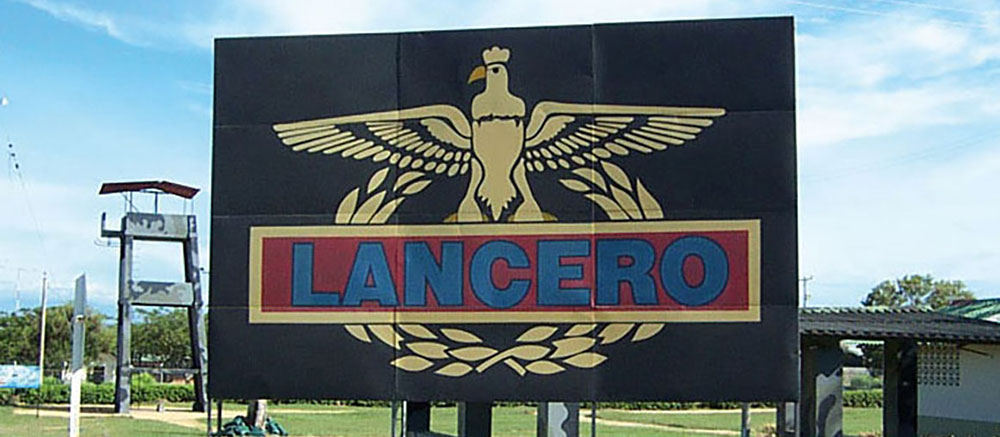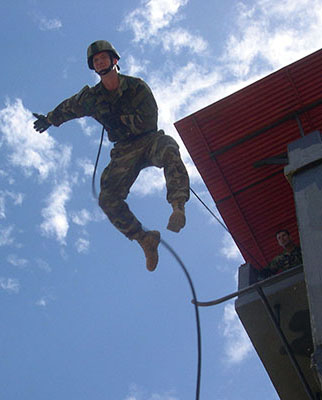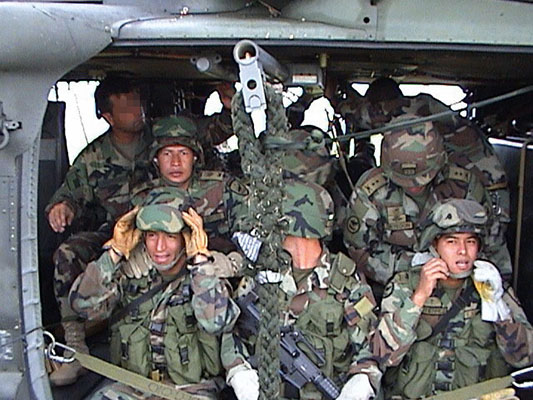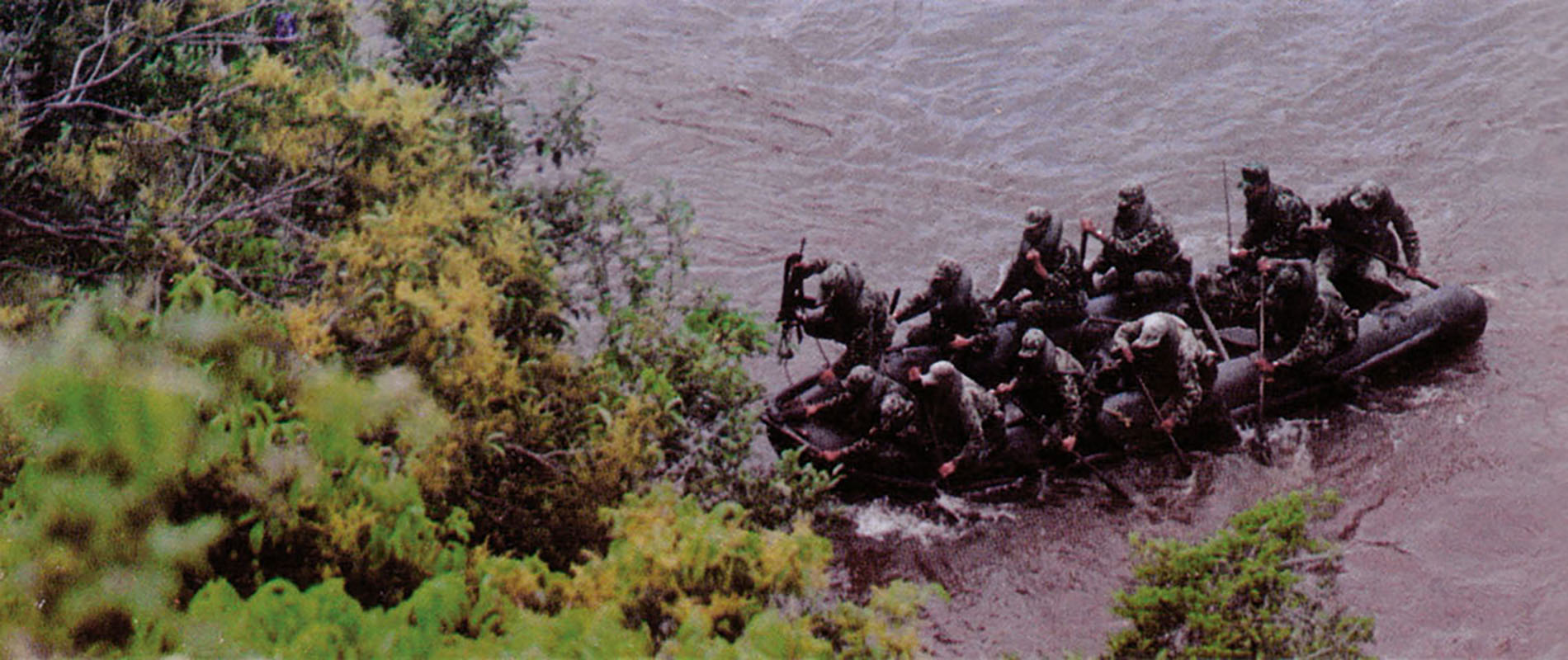NOTE
* Pseudonyms have been used for all military personnel with a rank lower than lieutenant colonel.
DOWNLOAD
The Colombian military has a variety of special operations forces (SOF) committed to the on-going conflict with the narco-terrorist elements in the country. American advisors work closely with the different units and serve at several command and control headquarters. This article will introduce several Colombian SOF elements, comparing them as appropriate to like elements and commands in the U.S. military.
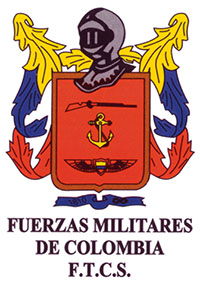
Located in Bogotá, the Commando Conjunto de Operaciónes Especiales (CCOPE pronounced See-Coh-Pay) was created in 2002 to serve as the command and control headquarters for all Colombian military special operations forces. The organization and mission of the CCOPE is roughly comparable to that of a miniaturized version of the Joint Special Operations Command (JSOC), at Fort Bragg, North Carolina.1 The CCOPE is commanded by a colonel who reports directly to the commander of the Colombian Joint Staff. An American officer is routinely assigned to serve with the CCOPE.
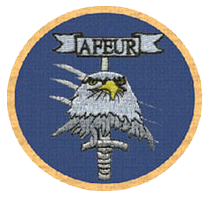
Major Ricardo Ramírez* of Special Operations Command, South (SOCSOUTH) was the U.S. military liaison officer (LNO) to the CCOPE during the spring and summer of 2006. “The CCOPE, like other Colombian units, has a very small staff. The deputy commander, an O-6 [colonel], doubles as the Chief of Staff and there is one lieutenant colonel that is both the J-1 and J-4 handling personnel and logistics. About twelve non-commissioned officers fill out the rest of the positions.”2 Five battalion-size units, known by their initials as the AFEAU, the AGLAN, the BACOA, the ACOEA, and the BAFEIM, and another service command and control headquarters, the COESE, make up the CCOPE. The subordinate units span the land, sea, and air aspects of SOF, and are tailored for specific missions.
Within the CCOPE organization, the unit tasked with the counter-terrorism mission is the Agrupación de Fuerzas Especiales Anti-Terroristas Urbanas or AFEAU (Af-Ā-You). This joint unit is the oldest counter-terrorism unit in the Colombian military, formed in the wake of the November 1985 seizure of the Palace of Justice by the terrorist M-19 group. Its mission is to target terrorist units and high-value targets in the urban areas as they are identified and confirmed, and react to terrorist attacks as they occur. Traditionally, C Company, 3rd Battalion, 7th Special Forces Group (7th SFG) has trained with the AFEAU, usually by two Joint–Combined Exercise and Training events each year at the AFEAU headquarters in Bogotá.3 The nature of the AFEAU mission tends to keep the unit image low-key. More recognizable among the CCOPE units is the Lanceros.
The Colombian unit most closely resembling the U.S. Army Rangers is the Agrupación de Lanceros (AGLAN, pronounced Ag-Lan). Commonly referred to as the Lanceros, the group is made up of five fifty-man companies, lettered A through E. In each company is a squad of scout snipers and there is a separate reconnaissance element in the battalion headquarters.4 The first companies were formed in 1959. The Lanceros are an elite infantry force that trains at the major Colombian Army base at Tolemaida.5 In the summer of 2006, ODA 745 (operational detachment alpha) from A Company, 2nd Battalion, 7th SFG (A/2-7) sent three team members to be integrated as advisors to the Lancero group reconnaissance elements.6 The 250-man Lancero group is about half the size of a 580-man U.S. Army Ranger battalion.7

To fill the Lancero units and train small-unit leaders for the Colombian Army, there is La Escuela de Lanceros (the Lancero School). The Lancero School, like the U.S. Army Ranger School, is a leadership school that trains junior officers and enlisted men in direct action and reconnaissance missions for Lancero units and the Army divisions. Formed in 1955 with the assistance of U.S. Army Captain Ralph Puckett Jr., the Lancero course is the most highly respected Ranger training in Latin America. The current course lasts seventy-three days and is a grueling test of stamina for the participants. Candidates come from all countries of Latin America as well as the United States, France, and Great Britain. The successful completion of the course, marked by the coveted Lancero badge, is an honor recognized throughout the continent.

